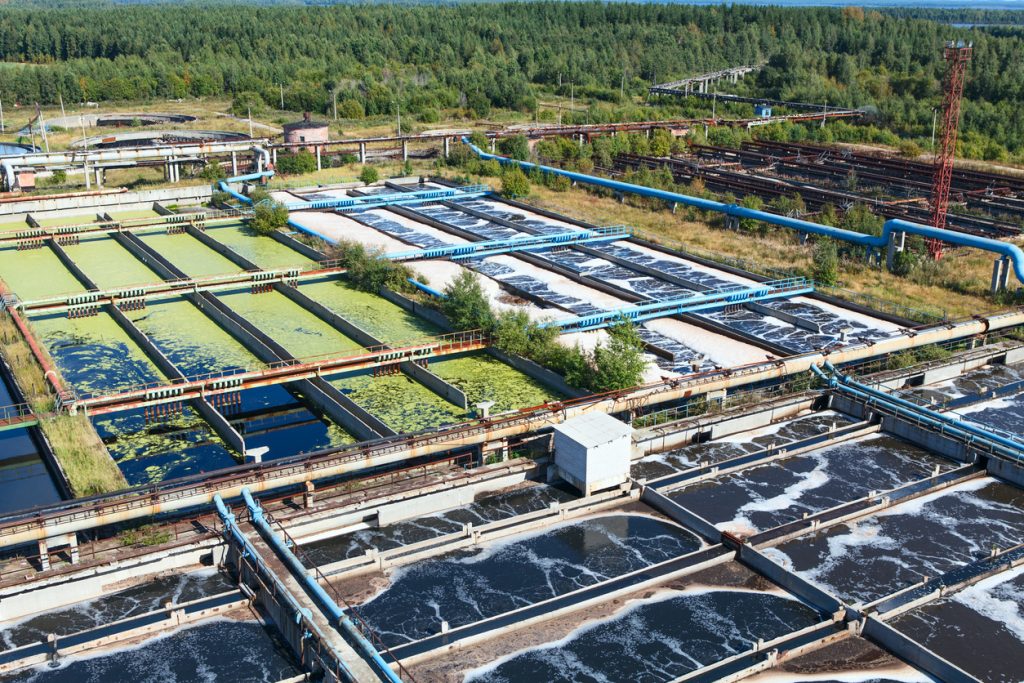The Significance of Chemical Processes in Waste Water Treatment
Strategic Approaches to Boost Waste Water Therapy Efficiency and Lessen Environmental Effect
In the realm of waste water treatment, the mission for boosted performance and lowered ecological influence is a perpetual challenge that requires calculated services. The integration of innovative therapy innovations, energy-efficient processes, source recuperation strategies, boosted nutrient removal techniques, and clever tracking and control systems stands for a diverse structure for attending to these pressing problems.
Advanced Therapy Technologies
Innovative membrane filtering systems have transformed innovative wastewater treatment processes, dramatically boosting the removal of pollutants. These cutting-edge systems function by forcing water via a semi-permeable membrane layer, properly dividing pollutants from the water stream. The membrane layer's microscopic pores trap toxins such as bacteria, viruses, and put on hold solids, permitting only purified water to travel through. This technology has verified to be very reliable in removing a large range of contaminants, including pharmaceuticals, hefty steels, and organic compounds, which are commonly testing to eliminate via conventional therapy techniques.
Furthermore, membrane layer purification systems offer countless advantages over traditional treatment methods. They call for less room, produce higher-quality effluent, and are much more resistant to fluctuations in influent water top quality. In addition, these systems are extremely flexible and can be easily incorporated right into existing treatment plants or used as standalone devices for decentralized applications. As the demand for clean water proceeds to increase, the adoption of innovative membrane layer filtering innovations is important to make sure sustainable and reliable wastewater treatment methods.
Energy-Efficient Procedures
The combination of energy-efficient processes in wastewater therapy systems is critical for enhancing resource application and decreasing operational expenses. By executing energy-efficient innovations, treatment plants can substantially decrease their carbon footprint and overall ecological influence. One vital approach to improving power efficiency in wastewater therapy is the utilization of sophisticated oygenation systems, such as great bubble diffusers or surface aerators, which can boost oxygen transfer efficiency and minimize energy usage. Additionally, including energy healing systems, like anaerobic digestion for biogas production or making use of excess heat for thermal processes, can aid offset energy demands and advertise sustainability.
Furthermore, enhancing procedure control and automation via making use of advanced sensing units and keeping an eye on systems can boost overall power efficiency by changing procedures in real-time based upon actual demand and problems. Applying power audits and on a regular basis monitoring energy performance indicators are necessary practices to determine locations for improvement and track energy-saving initiatives effectively. Overall, the fostering of energy-efficient procedures in wastewater therapy not just benefits the environment but additionally adds to long-lasting cost financial savings and functional sustainability.
Source Recovery Strategies
With a concentrate on maximizing source use and sustainability in wastewater treatment systems, the application of source healing strategies becomes a critical facet in enhancing operational performance. Resource healing approaches in wastewater treatment involve the recognition and extraction of valuable sources from the waste stream, thus turning what was when thought check these guys out about waste into a beneficial possession. By implementing source recovery strategies such as nutrient removal and recuperation, power generation from raw material, and the production of multiple-use water, wastewater treatment plants can minimize environmental impact while maximizing efficiency.

Improved Nutrient Elimination Strategies
Executing sophisticated nutrient removal techniques is vital for enhancing the efficiency of wastewater therapy systems. One of the key strategies used for boosted nutrient removal is the procedure of biological nutrient elimination (BNR), which includes the removal of nitrogen and phosphorus with organic processes.

Along with BNR, progressed therapy methods such as membrane bioreactors (MBRs) and built wetlands can also be employed to boost nutrient removal effectiveness. MBRs utilize membranes to attain top quality effluent criteria by effectively getting rid of nutrients and suspended solids. Created wetlands imitate all-natural marsh procedures to eliminate nutrients via plant uptake, microbial activity, and sedimentation. By incorporating these sophisticated nutrient elimination methods right into wastewater treatment districts, industries and systems can properly decrease nutrient pollution and secure the environment.
Smart Surveillance and Control Solution
Using sophisticated technology, the integration of wise tracking and control systems transforms the functional performance of wastewater treatment centers. These systems include innovative sensors and data analytics to continually keep track of vital criteria such as pH levels, turbidity, my explanation liquified oxygen, and circulation rates in real-time. By gathering and examining this information, drivers can acquire important insights right into the performance of the therapy processes, allowing positive adjustments to optimize therapy efficiency.
Smart monitoring and control systems likewise support remote surveillance capacities, permitting operators to access real-time data and control features from off-site places. This remote availability improves operational adaptability and responsiveness, making it possible for swift interventions in instance of system malfunctions or variations in influent quality. Additionally, the predictive maintenance abilities of these systems assist prevent equipment failures and decrease downtime, inevitably boosting the overall dependability of wastewater therapy operations (Waste Water Treatment).
Conclusion
In final thought, tactical approaches such as advanced therapy technologies, energy-efficient processes, resource recuperation strategies, enhanced nutrient removal strategies, and clever tracking and control systems play an essential function in enhancing wastewater therapy efficiency and decreasing environmental impact. By applying these methods, wastewater treatment plants can improve their total efficiency, reduce power consumption, recover beneficial sources, and make certain conformity with ecological guidelines. These approaches are important for efficient and sustainable wastewater management methods.

In conclusion, strategic techniques such as advanced therapy innovations, energy-efficient procedures, resource healing strategies, improved nutrient elimination techniques, and clever monitoring and control systems play an essential duty in enhancing wastewater therapy efficiency and decreasing environmental effect.